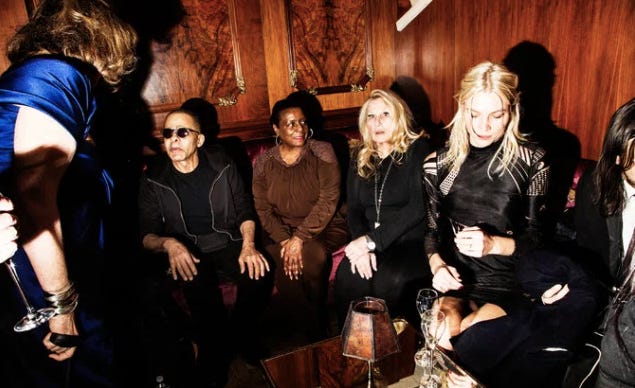I write weekly newsletter about how the new forms of social, cultural, and environmental capital change brand strategy. If you enjoy this issue, please like it above, share it with anyone you think may find it useful, and subscribe below:
The year is 1973, the place is Versailles, the guests are Grace Kelly, Andy Warhol and Marie-Hélène de Rotshschild. Five established French designers compete against five American designers in a fundraiser to renovate Versailles.
Organized by a publicist Eleanor Lambert and a curator Gerald Van Der Kemp, the event aimed to show that American fashion industry is a force to be reckoned with (or at least, paid attention to). On the French team, there were Yves Saint Laurent, Givenchy, Ungaro, Cardin and Marc Bohan. On the American team, there were Bill Blass, Anne Klein, Oscar de la Renta and Stephen Burrows.
Who won?
If Robin Givhan, author of “The battle of Versailles” is to believe, “ultimately, it was the Americans who stunned the crowd that night — less with their craftsmanship than with their success in capturing the spirit of the modern woman through both their clothes and the pure energy they poured into the show.”
A lot of this excitement has to do with Stephen Burrows. The youngest of the group, and the only African American, Burrows belonged to the 1970’s “Fun City” disco scene in New York City. His aesthetics has been described as "what American fashion was all about." Per late Karl Lagerfeld, “Burrows is the only original American designer since Claire McCardell. He created his own rules about cut. It was sophisticated, original, unorthodox.”
At the event, Burrows’ clothes were worn by eleven iconic Black models: Bethann Hardison, Pat Cleveland and Billie Blair among them. They danced to a soundtrack of Al Green and Barry White and the entire affair was described as a “small musical.” (French models walked to the sounds of a live orchestra).
Fast forward to 2020, and the lessons of Stephen Burrows and the Battle of Versailles are unchanged:
The 80:20 rule. 80 percent is storytelling and 20 percent is product. Just like the Battle of Versailles was a show, a performance and a “mini-musical,” Telfar’s shows are multimedia performances with a strong theme and a message. Most recent one was about American Dream by those overlooked by it. Kerby Jean-Raymond’s 2019 show was described as an art project that told American story in three parts, titled “American, also.” Cowboy iconography and black, brown, queer narrative featured prominently in both shows.
Keep reading with a 7-day free trial
Subscribe to The Sociology of Business to keep reading this post and get 7 days of free access to the full post archives.




